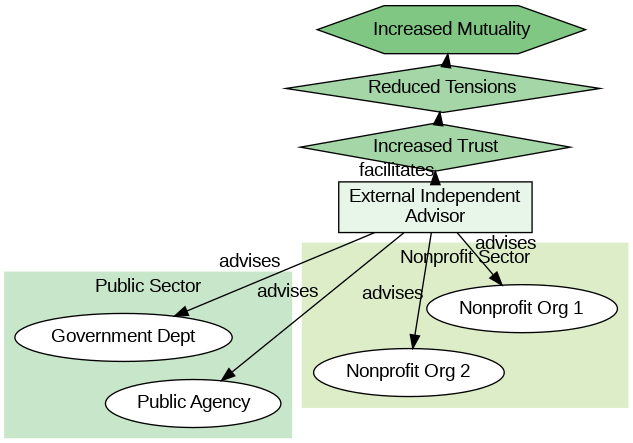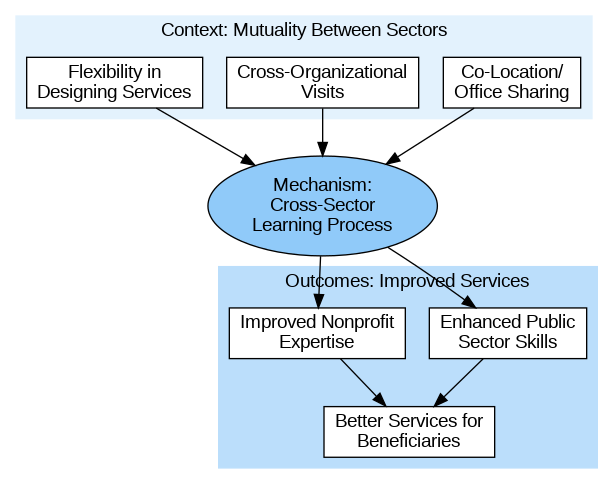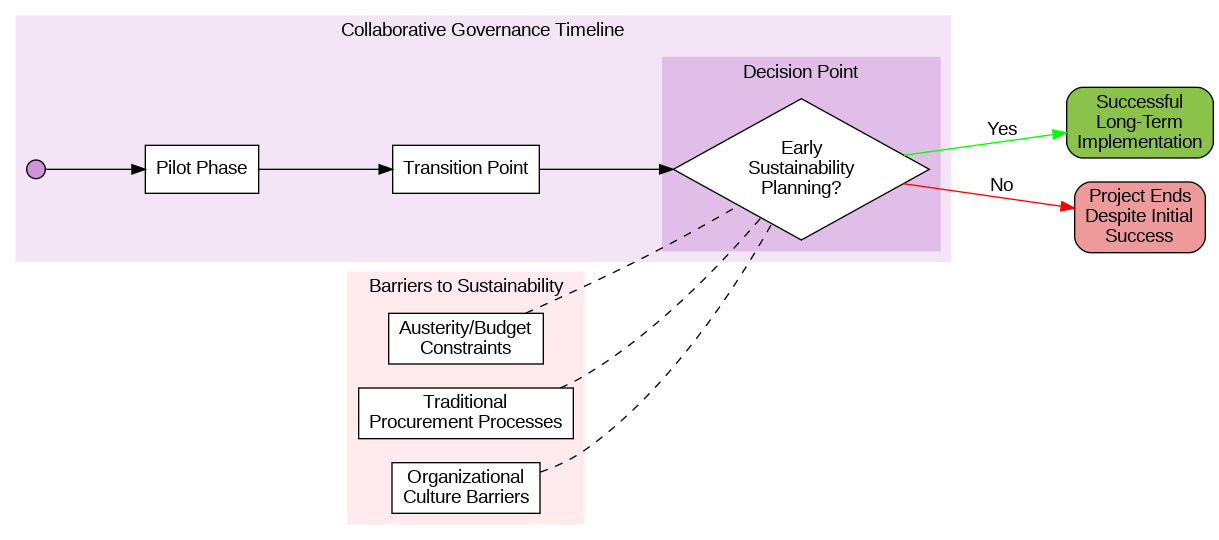
Background and Context
Collaborative Governance Research
The study examines how nonprofits contribute to collaborative governance arrangements, filling a gap in understanding what works, for whom, and in what contexts.
Scottish Policy Context
The research analyzed six "Strategic Public Social Partnerships" (SPSPs) in Scotland designed to involve nonprofits earlier and more deeply in public service design and commissioning.
Realist Evaluation Approach
The researchers employed a realist evaluation methodology using 41 in-depth interviews and four focus groups to connect processes to outcomes through Context-Mechanism-Outcome configurations.
Leadership Expertise in Both Sectors Builds Trust and Mutuality

- Leaders with knowledge of both nonprofit and public sectors were crucial for establishing trust among different partners.
- Trust enabled partners to decrease competition and develop mutuality, improving dynamics between commissioners and providers.
- Motivated leadership with cross-sector experience created an environment where resources could be productively pooled and shared.
Centralized Public Authority Control Undermines Collaborative Potential

- Overly centralized leadership, particularly from public authorities using traditional commissioning approaches, hindered true collaboration.
- Unequal power distribution weakened trust between partners and raised doubts about whether partnerships were genuinely collaborative.
- When public sector partners maintained dominant control, nonprofit partners felt the collaborative rhetoric didn't match reality.
External Mediators Facilitate Trust and Reduce Partnership Tensions

- Independent external advisors with expertise in both sectors provided crucial brokerage and facilitation support.
- External mediators increased partner confidence by addressing procurement questions and providing reassurance during challenging situations.
- This mediation reduced tensions between partners and maintained collaborative environments, ultimately promoting increased mutuality.
Mutual Learning Processes Improve Service Quality and Professional Skills

- Co-location and opportunities for interaction between sectors facilitated knowledge sharing and appreciation of different organizational cultures.
- Public sector staff gained better understanding of service user needs, while nonprofits enhanced their professional competence.
- This mutual learning process led to improved service provision and increased nonprofit capacity in procurement processes.
Long-term Sustainability Planning Critical for Collaborative Success

- Lack of clarity about sustainability beyond initial funding adversely affected collaborative governance processes and outcomes.
- Budgetary constraints made it challenging to mainstream redesigned services without early identification of sustainability pathways.
- Only one partnership successfully redesigned, tendered and commissioned a service demonstrating the importance of sustainability planning.
Contribution and Implications
- Collaborative governance involving nonprofits can improve services, but only when trust is established and maintained through appropriate leadership.
- Mutuality between sectors enables knowledge sharing and learning processes that lead to better services for end users.
- Long-term sustainability must be considered from the beginning of collaborative processes to ensure meaningful system change.
- Simply involving nonprofits does not automatically lead to better outcomes without addressing power dynamics and leadership approaches.
- Realist evaluation offers a promising methodological approach for understanding complex collaborative governance arrangements in various contexts.
Data Sources
- The diagrams are based on the six Context-Mechanism-Outcome (CMO) configurations identified in the findings section of the article.
- Each visualization captures the interplay between context factors, mechanisms, and outcomes as described in the CMO analysis framework.
- The empirical data came from 41 in-depth interviews and four focus groups with stakeholders from six Strategic Public Social Partnerships in Scotland.





